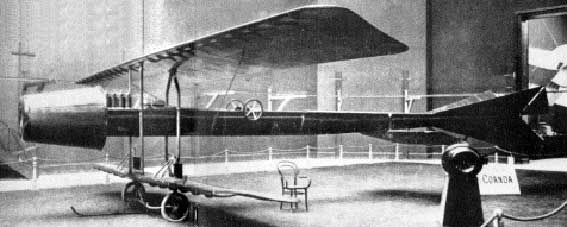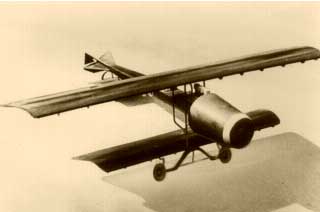

|
Henri Coanda 1886 to 1972 |
The aeroplane was on display in October 1910 at the Second International Aeronautical Exhibition at the Grand Palais in Paris were it caused a great deal of interest and crowds as no one had seen any thing like it before (nor would they for another thirty years!). After the Exhibition closed on the 10th of December 1910, Henri Coanda moved his aeroplane to Issy-Les-Moulineaux, were he intended to test the engine, the results of which are best told by Henri Coanda himself.
 "It was on 16 December 1910. I had no
intention of flying on that day. My plan was to check the operation of
the engine on the ground but the heat of the jet blast coming back at
me was greater than I expected and I was worried in case I set the aeroplane
on fire. For this reason I concentrated on adjusting the jet and did not
realize that the aircraft was rapidly gaining speed. Then I looked up
and saw the walls of Paris approaching rapidly. There was no time to stop
or turn round and I decided to try and fly instead. Unfortunately I had
no experience of flying and was not used to the controls of the aeroplane.
The aeroplane seemed to make a sudden steep climb and then landed with
a bump. First the left wing hit the ground and then the aircraft crumpled
up. I was not strapped in and so was fortunately thrown clear of the burning
machine".
"It was on 16 December 1910. I had no
intention of flying on that day. My plan was to check the operation of
the engine on the ground but the heat of the jet blast coming back at
me was greater than I expected and I was worried in case I set the aeroplane
on fire. For this reason I concentrated on adjusting the jet and did not
realize that the aircraft was rapidly gaining speed. Then I looked up
and saw the walls of Paris approaching rapidly. There was no time to stop
or turn round and I decided to try and fly instead. Unfortunately I had
no experience of flying and was not used to the controls of the aeroplane.
The aeroplane seemed to make a sudden steep climb and then landed with
a bump. First the left wing hit the ground and then the aircraft crumpled
up. I was not strapped in and so was fortunately thrown clear of the burning
machine".
How ever after this (the FIRST flight of a jet powered aeroplane) Henri Coanda could not find financial backing to progress with his invention.
Gustava Eiffel remarked of Henri Coanda "This boy should have been born thirty years later"